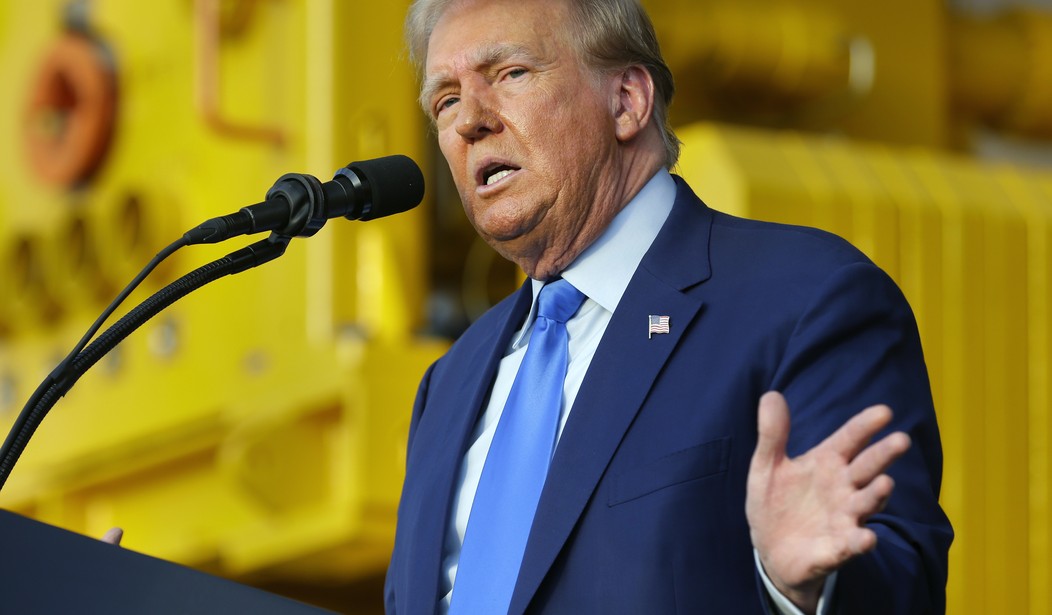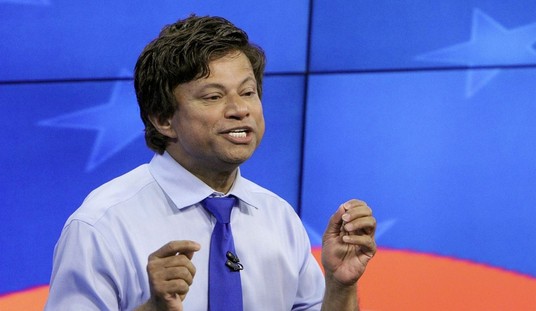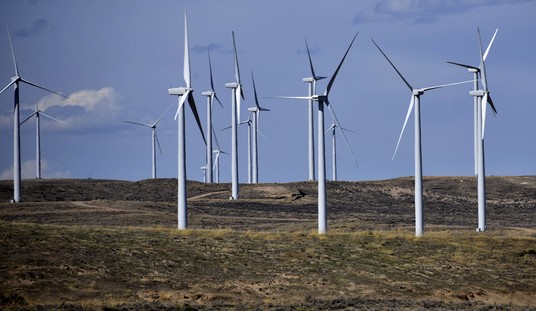It's looking increasingly likely that the 2024 presidential election will be between President Joe Biden and former and potentially future President Donald Trump. Trump continues to have close to a 50-point lead in the race for the GOP nomination less than two months before the Iowa Republican caucus on January 15. As more and more polls come out regarding the hypothetical 2020 rematch, the situation doesn't look good for the incumbent president.
As of Monday night, RealClearPolitics (RCP) shows Trump up with a spread of +2.6 against Biden. Of the 17 polls that concluded in November, Trump is up in all but two polls. Biden is up +4 in a Rasmussen Reports poll conducted November 8-12 and was also up +2 in an I&I/TIPP poll from November 1-3. That being said, the latter poll's headline still noted a dead heat and improvements for Trump.
The media has now been forced to take notice. On Saturday, POLITICO highlighted how "The polls keep getting worse for Biden," which focused on how November has been a particularly bad month for the president, one year out from the general election. The report includes graphics showing Biden's loss of support over time.
Such polls notably come after The Washington Post/ABC News poll was released in late September, showing Trump ahead of Biden by +10.
It's not just that voters are turning on Biden, though that is a factor. Voters may very well be favoring Trump, too.
Recommended
"And while polls suggest most of the movement comes from voters abandoning Biden — who might become undecided but not swing to supporting Trump — the Republican has also started to gain steam. Trump's vote share in the national polling average is higher now than at any point in the past year," the POLITICO report states.
Particularly noteworthy is the mention of young voters. "Biden's recent slide — and his political predicament some 11 months before Election Day — represent a confluence of slippage with reliable Democratic constituencies like young voters, the outbreak of war in the Middle East and the rise of independent and third-party candidates who could siphon votes from both Biden and Trump," the piece goes on to read.
What follows is a subheadline dedicated to the demographic: "Biden is losing young voters — but it's unclear how many."
The section mentions:
This week’s NBC News poll had a stunning result: Trump led Biden among voters younger than 35, 46 percent to 42 percent.
Even though that was well within the high margin of error for such a small subgroup, other polls also show a close race with what has been a reliable Democratic constituency. Biden had only single-digit leads among voters 18-34 in polls this month from Morning Consult (Biden +2), Fox News (Biden +7) and Quinnipiac University (Biden +9). (Trump led Biden in all four polls among all voters.)
Only a few polls show Biden with a lead among young voters that approaches his 2020 margins, but they are the exception, not the rule.
That’s prompted a debate over whether Trump is really making the deep inroads with younger voters the polling suggests — or if those numbers are an artifact of some kind of polling bias. One popular theory speculates that liberal younger voters who are unenthusiastic about Biden and his party — over his administration’s support for Israel in its war with Hamas, for example — aren’t participating in polls right now, even if many of them will vote for him next November.
But Biden, the oldest president in history, has never polled well with younger voters. And telephone polls — of the four mentioned above, all but Morning Consult were conducted over the phone — are a difficult way to reach younger voters.
POLITICO wasn't the only one to go with such a narrative. On Monday morning, The New York Times published "Why Biden's Weakness Among Young Voters Should Be Taken Seriously" as part of its "The Tilt" newsletter.
Nate Cohn, the author of the piece, points to The New York Times/Siena College poll POLITICO mentions. It shows Trump leading in five of six battleground states. Cohn also highlights at length the hope that the polls could be wrong.
"When it comes to the Times/Siena poll, we've put forward a lot of evidence consistent with the theory that the polling is mostly right, but that things might change," his piece notes with original emphasis.
As Cohn highlights, the polls could change:
By the measures at our disposal, the voters 18 to 29 in our survey “look” right. They say they backed Mr. Biden over Mr. Trump in the last presidential election by a wide margin, 57-35, right in line with our expectations. They “look” right by other measures of partisanship as well. In the states with party registration, for instance, the Times/Siena young voters were registered Democrats by a 13-point margin, 35 percent to 22 percent. That’s almost exactly in line with their actual 13-point registration advantage, 36 percent to 23 percent.
It’s important to emphasize that just because the polls “look” right doesn’t mean they are right. Our polls looked “right” by these kind of indicators in 2020. They were still wrong in important ways (though they were right about plenty as well, including racial and generational depolarization). But these data points nonetheless raise the burden on those who assert that the issue is partisan nonresponse bias, in which young Democrats simply aren’t answering their cellphones (99.8 percent of our young respondents were reached by cellphone).
We see no evidence of that. In our polling, the problem for Mr. Biden isn’t too few young Democrats. It’s that many young Democrats don’t like him. Mr. Biden has just a 76-20 lead among young voters either registered as Democrats or who have previously voted in a Democratic primary. It’s just a 69-24 lead among young nonwhite Democrats. The dissent exists among self-identified Democrats, Democratic-leaners, Biden ’20 voters, and so on.
This kind of intraparty dissent is rare but not without precedent in our polling. I’ve seen it in our congressional polls of highly educated suburbs full of Romney-Clinton voters. And I’ve seen it once before in a statewide presidential race: our final polls in 2016, when Mr. Trump suddenly surged to obtain 30 percent of white working-class registered Democrats. It was hard to believe, but it was fairly easy to explain and it raised the serious possibility of a Trump win.
Similarly, I think it’s fairly straightforward to explain Mr. Biden’s weakness among young voters today, much as it was easy to explain Mrs. Clinton’s among white working-class voters in 2016. Young voters are by far the likeliest to say he’s just too old to be an effective president. Many are upset about his handling of the Israel-Hamas war. And all of this is against the backdrop of Mr. Biden’s longstanding weakness among young voters, who weren’t enthusiastic about him in 2020, and Mr. Trump’s gains among nonwhite voters, who are disproportionately young.
But even if you don’t buy these explanations, that’s mostly just a reason to believe the numbers will shift over the next year, not a reason to dismiss the polling.
One of the November polls in the piece comes from Emerson College Polling, where Trump is up 47 percent to Biden's 43 percent. Biden had previously been at 45 percent the month before. This poll is worth mentioning since the subheadline states: "Biden's Base of Young Voters, Women Significantly Lower than November 2022."
Another VIP piece from last month went with a similar headline as this one: "Is Trump Really Making Gains With Young People?" It's a fair question, especially when young people are known for overwhelmingly supporting the Democratic Party, or at least that used to be the case.
Just as the poll from The Washington Post/ABC News was regarded as an "outlier," so, too, is the notion that Trump could do well with young voters. Can so many polls be considered an outlier, though? As more polls continue to show that to be the case, the narrative that Trump could win and do well with young voters will become increasingly worth paying attention to. At the same time, Trump and the Republican Party cannot afford to get cocky.
Even though young people tend to vote Democratic, and they certainly did in 2020 to help elect Biden, they have soured on the current president. Biden has continuously faced low approval ratings from young voters, and it's not necessarily because he's not leftist enough for them on issues like the Israel-Hamas war. TikTok videos have gone viral of young people complaining about a $16 meal at McDonald's, as our sister site of Twitchy covered. This could be a particularly foreboding sign for Biden, given how his administration has looked to reach out to young people via TikTok influencers.
With the polls looking to be close for a Trump-Biden rematch, voters staying home – especially a demographic as large as young people – could make a difference.

























